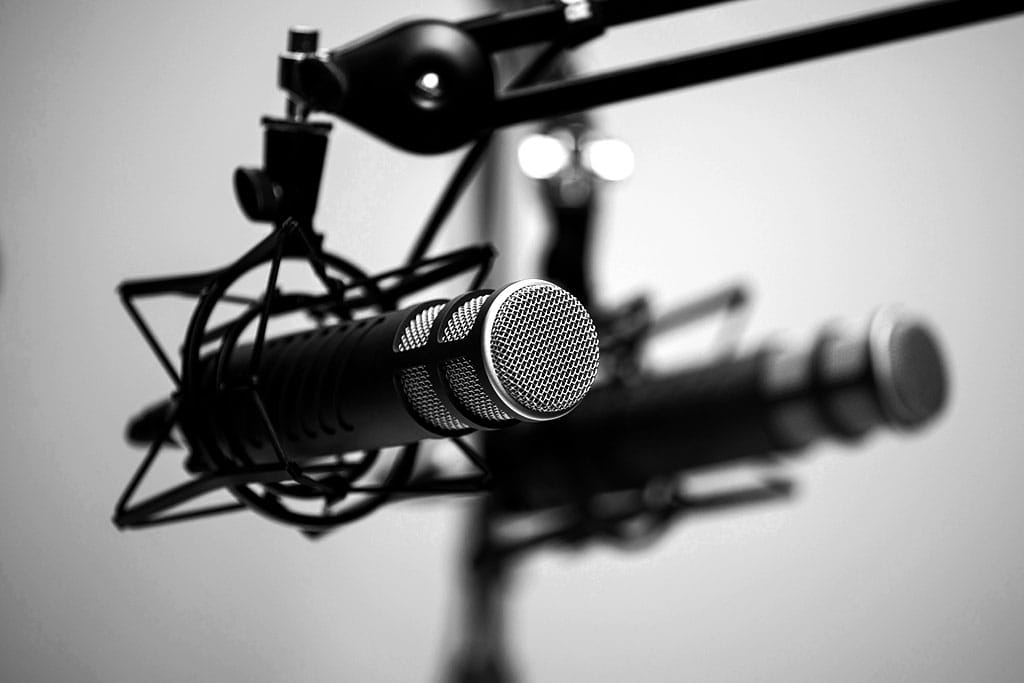May 1, 2020
Is the Podcast Medium Getting Louder in 2020?
Nate Hook

When I initially targeted this topic to share with our audience, its fundamental conceit was to focus on how podcasting as a medium, and an industry, had reached new heights in its steady climb to prominence. At that time had someone asked me what I thought about COVID19, I would have returned with a quip about not being up on the latest boy bands and chortled at them as I waited smugly for them to correct me.
COVID19, the global pandemic, wasn’t on the hearts and minds of the world back in December, its tendrils had not yet reached into our consciousness to constrict our sense of safety. In the time since, so much has changed, and for the podcasting medium, its reflection of our consciousness has seen our behaviors change with it. First however, it’s important to understand how podcasting, as a medium, is performing.
A recent podcasting study showed that over 144 million people in the US have listened to a podcast, roughly 51% of those over the age of 12. It’s no small feat to amass this kind of awareness, and truly, up until just a few years ago, podcasting as a medium was still seen as somewhat niche. Back in 2005, Apple initiated the launch of podcasting with 3,000 shows, and today, we have over 800,000 active podcasts with over 54 million shows respectively. This massive proliferation in the past 15 years can be attributed to the rise and equal proliferation of the smart phone, but it also points to our choices in the media we consume. Netflix has risen to its juggernaut status by strategically funneling mass audiences to a few dozen niche interests—there is something for nearly everyone. The podcasting world takes this to the extreme, with shows that stretch across nearly every interest, hobby, profession, or aspect of our society and economy. Most recently, this would include a growing niche segment dedicated to our present global health crisis.
Podcast’s niche credentials are reflective of our society’s increasing need to self-identify in our media decisions, and our fundamental desire to be understood translates into the medium in powerful ways. Smart brands understand this and have used audience data to align advertising to podcasts with similar psychographic profiles. Podcast ad revenue is predicted to be over $800 million in 2020, with more popular podcasts charging anywhere from $10 to $50 for every 1,000 listeners. This equates to two or three times the ad rate compared to broadcast radio.
Monthly podcast listeners also track to greater affluence as 41% have a household income over $75K, and 29% over $100K. Additionally, at least 80% have attended college. This mixture of education and affluence combines to make a prime target for advertisers, especially for brands that understand brand cult, and can integrate messaging to uniquely speak to these audiences. As with the example of Netflix’s strategy, brands, even cult brands, can do this by adapting to a strategic “consolidated niche” approach. Podcast listeners are receptive to many of these brand relationships with podcasts, with 70% of avid listeners actively considering products or services based on podcast-based ads.
Brands are also seeing podcasts as a unique channel to deliver branded content or entertainment through. From Fortune 100 companies such as GE (The Message) to e-commerce darlings like Shopify (TGIM), banking brands such as Bank of America (The World To Come) and Umpqua Bank (Open Account), even tourism destinations such as Travel Wisconsin, and California (California Now) are finding their voice, and creating an more intimate relationship in producing focused content for their audiences.
As a component of the digital marketing stack, podcasts also create a swell of positive benefits beyond podcast listeners alone. Adding podcasts to your web properties can have long lasting positive effects on your brand’s search engine index ratings, and savvy marketers are watching the overall trends and planning ahead as 17% plan to add branded podcast content to their marketing mix in 2020.
It’s a perfect combination: focused targeting through unique audiences, a closer relationship through the possibility of niche messaging, and listeners that statistically stay more engaged with the content (93% listen-through).
As the COVID19 pandemic has changed many of our familiar patterns, podcasting has seen shifts as well, with a decline overall in listens as daily routines have been disrupted. However, with some growing categories such as fiction, design, food, hobbies, religion, and kids & family, sharp increases have been seen—all up by triple digits—and in the case of design and food, quadruple digits.
No matter where your industry falls, the guiding direction is there are opportunities both in crafting impactful messages to your unique audiences, and in strategically developing your brand’s own podcasting voice. Plus, the payoff to your other channels, such as web and social, can be sizable.
While the world is on pause, there is no better time to seize this opportunity as marketers and gain some ground in diversifying your marketing mix. Podcasts, regardless of your approach, can be a new source to deliver on your business goals, especially now as economies and brands look to get momentum back as the world sees signs of daylight at the end of this phase of the COVID19 crisis.
If you’re interested in how you can strategically approach podcasting for your brand or business, let us know, we like to share our expertise with organizations looking for innovative ways to grow their business.
Sources:
Voxnest: COVID-19’s Impact on Podcast Listening Study
Edison Research: The Podcast Consumer 2019
IAB & PWC
Get insights delivered straight to your inbox.